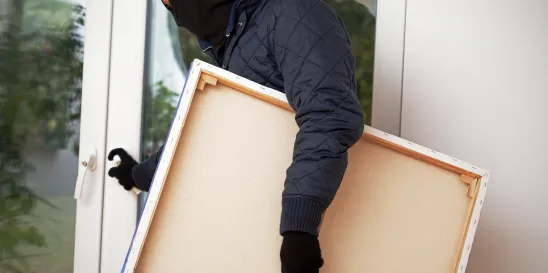In August 2023, the New York District Attorney’s (NYDA) Antiquities Trafficking Unit, which specializes in investigating looted artifacts, seized a headless statue valued at $20 million from the Cleveland Museum of Art (CMA) under a search warrant issued by a New York court. The NYDA announced that the seizure was linked to a criminal investigation targeting a smuggling ring that trafficked antiquities looted from Turkey through Manhattan. It further asserted that since the alleged traffickers were primarily based in New York, it provided them with the legal authority to seize the statue from another state, deeming New York as the central hub of the conspiracy.
However, two months later, the museum filed a complaint against NYDA to block the seizure order by contesting its rightful ownership of the statue. According to CMA’s complaint, it purchased the statue for $1.85 million from a New York gallery in 1986. The purchase document describes the statue as “Figure of a Draped Emperor (Probably Marcus Aurelius), Roman, late 2nd Century A.D., bronze.” The document included representations and warranties to CMA, stating that the seller was the “lawful owner, that the statue was free from all encumbrances, and that the seller had good right to sell the statue.” The museum has held title continuously since the purchase.
The modification that CMA made to the description of the statue also raises suspicions. Until recently, the museum’s website had described the statue as “The Emperor as Philosopher, probably Marcus Aurelius (reigned AD 161-180),” adding that the item had originated from “Turkey, Bubon(?)[1] (in Lycia), Roman, late 2nd Century.” But now the museum has removed the website’s references to Turkey and Aurelius and changed the text to read: “Draped Male Figure, c. 150 BCE-200 CE, Roman or possibly Greek Hellenistic.” It also altered the language of its accompanying description to read “unusually, however, the pose and dress resemble those of a Greek philosopher or orator (wearing a chiton and himation) rather than a Roman statesman (who would wear a toga). Thus, without a head, inscription, or other attributes, the identity of the figure represented remains unknown.”
Against the backdrop of Turkey’s rise as an economic and political power in the Middle East, Turkey has been making efforts to retrieve its stolen cultural property back from other countries. The Antiquities Trafficking Unit, collaborating with Turkish officials, has resumed the investigation, building on previous efforts by Turkish and American scholars to reconstruct the dispersed Bubon group between the 1970s and 90s.[2] To date, the U.S. has repatriated $33 million worth of pilfered artifacts to Turkey, but the status of the headless statue at CMA remains unclear. In recent years, Turkey has sought details from CMA about the statue, as it believes it was also illicitly excavated and exported, expressing a desire to conduct scientific examinations on it. However, CMA has declined to share the provenance information, arguing that Turkey’s requests were overly broad and general.
With an increasing number of cases involving artifacts that were looted during the Holocaust and other conflicts and eventually landed in the U.S., especially New York, U.S. courts have developed legal theories in this realm, ranging from foreign sovereign immunity to choice of law, to jurisdiction and appropriate venue, to statutory limitation, to defense of laches, to adverse possession, and to good title. This blog article primarily delves into the title issue presented by the CMA case.
Ownership Interest
In the case of Republic of Croatia v. Trustee of Marquess of Northampton, the court grappled with a claim similar to the CMA case, where both the Republic of Croatia and Hungary sought to claim the title of historical silver serving pieces, commonly referred to as the Sevso Treasure, believed to have been crafted in the fourth or fifth centuries and then in possession of an auction house. The court underscored the need to determine whether the claimants can establish ownership of the Treasure. It allocated the burden of proof on the Republic of Croatia and Hungary, the claimants, to prove the “find-site of the Treasure” and stated there is no burden on the current possessor to prove that his title to the Treasure was valid.
In United States v. Mount, the court confirmed the admissibility of circumstantial evidence to prove ownership. The defendant in this case was charged under the National Stolen Property Act with stealing letters by James Whistler and other documents from the Library of Congress and the National Archives. Mount challenged the institutions’ ownership of the materials. The court found that although “[n]either institution maintains comprehensive records of its manuscript holdings,” the government had sufficiently proven ownership by “cobbling together bits and pieces of evidence.”
In the CMA case, numerous scholarly articles provide different insights into the statue’s origins. The statue’s missing head complicates efforts to conclusively identify it, casting doubt over whether NYDA can satisfactorily meet the burden of proof to prove that Turkey is the “find-site” of the headless statue. Though it appears from the complaint that NYDA has not produced any convincing evidence to prove that the statue was stolen from Turkey, once the litigation commences, NYDA may use various discovery tools such as request for inspection to conduct scientific research on the statue to acquire more information regarding the origin of the statue.
Bona Fide Purchaser Defense and Theft Exception
In a typical quiet title dispute, once the claimant establishes the ownership interest, the current possessor and subsequent purchaser often turns to the bona fide purchaser defense. This defense is rooted in UCC 2-403, which states that “a person with voidable title has the power to transfer a good title to a good faith purchaser for value.” The underlying intent of the good faith purchaser exception is to foster commerce, reduce transaction costs, and encourage transactions without necessitating a burdensome investigation into the rights of all preceding possessors in the distribution chain.
However, unlike the civil law countries in Europe where a subsequent good faith purchaser is presumed to acquire superior title to that of the original owner, no matter whether the subject matter was stolen or looted, or not, common law countries, including the U.S., provide that a thief neither acquires nor can convey a title. In Menzel v. List, the court held against a subsequent purchaser who knew nothing of the previous history of a painting that was looted during the WWII and merely relied on the reputability of the gallery as to the authenticity and title of the painting, for the reason that good title could not be conveyed to the subsequent purchaser through gallery when the sole and rightful owner never abandoned ownership. Furthermore, the court in Solomon R. Guggenheim Foundation v. Lubell allocated the burden to the subsequent purchaser to disprove any theft. This creates a challenging evidentiary barrier, especially for cases concerning losses or disappearances that aren’t clear-cut or well-documented thefts, like the statue.
Therefore, if NYDA can prove that Turkey has an ownership interest in the statue (and therefore the statue was illegally exported), CMA cannot argue its reliance on the representation and warranty by the selling gallery to establish good title under the U.S. law because the statue is stolen property. Even though CMA can disprove the theft for some reason, proving itself to be a bona fide purchaser could also be challenging. The determination of whether a purchaser acts in good faith hinges on the case’s specifics. A pivotal, albeit not mandatory factor, is the extent and rigor of its provenance research. In U.S. v. An Original Manuscript Dated November 19, 1778, the court dismissed the buyer’s bona fide purchaser defense, noting his oversight in not delving into provenance or soliciting written proof of it. In its filings, CMA did not demonstrate that it conducted any provenance research during the acquisition process. Furthermore, apart from the bill of sale, there was no attached correspondence or documentation regarding the statue’s history or any export certificates. Consequently, if CMA contends its position as a bona fide purchaser, it may lose this defense assuming its apparent oversight in conducting thorough provenance research.
Though they are not retrospective, “Standards Regarding Archaeological Material and Ancient Art” published by the American Alliance of Museums (AAM)[3] and “Guidelines on the Acquisition of Archaeological Material and Ancient Art” adopted by the Association of Art Museum Directors (AAMD)[4] shed some light on how museums should conduct provenance research when procuring archaeological material and ancient art. These policies underscore the imperative for museums to diligently vet the provenance of objects before procuring them, solicit all pertinent documentation related to the object’s history (including export and import papers), and mandate that sellers, donors, and intermediaries supply exhaustive information and records. Particularly for items exported post-November 17, 1970, from their nation of recent discovery, the AAM and AAMD standards urge museums to ensure they possess documentation authenticating the legal exportation and subsequent lawful import into the U.S.
Conclusion
Cultural property is frequently stolen or illicitly exported from countries worldwide, encompassing everything from artifacts taken illegally from archaeological sites to the spiritual and sacred items of indigenous communities. Since its inception, NYDA has been actively investigating, confiscating, and repatriating cultural assets worth millions of dollars to their rightful nations. The recent filing by CMA presents an uncommon challenge by an art institution against a seizure order. The court’s final decision will largely hinge on the evidence presented by NYDA on the ownership issue.
However, it’s worth highlighting that litigation in these cases can be costly and prolonged, often necessitating testimonies from foreign experts on their countries’ laws and extensive archaeological evidence. This underscores the criticality of due diligence prior to acquiring artworks, especially older pieces. In addition to researching databases of lost, stolen, and looted art such as the Art Loss Register, and consulting art law professionals on provenance research, buyers should also consider purchasing title insurance to protect against potential financial loss from defects in the acquired title.
FOOTNOTES
[1] More than 50 years ago, farmers uncovered an archaeological treasure trove at Bubon, a Roman site in southwestern Turkey. The area, likely a shrine used to worship the emperor and his family, contained several rare bronze statues of Roman emperors and empresses. Despite strict cultural patrimony laws, they secretly sold the bronzes to antiquities traffickers.
[2] https://artdogistanbul.com/en/statue-looted-from-turkey-seized-from-cleveland-museum-of-art/
[3] https://www.aam-us.org/programs/ethics-standards-and-professional-practices/archaeological-material-and-ancient-art/
[4] https://aamd.org/sites/default/files/document/AAMD%20Guidelines%202013.pdf



 />i
/>i
